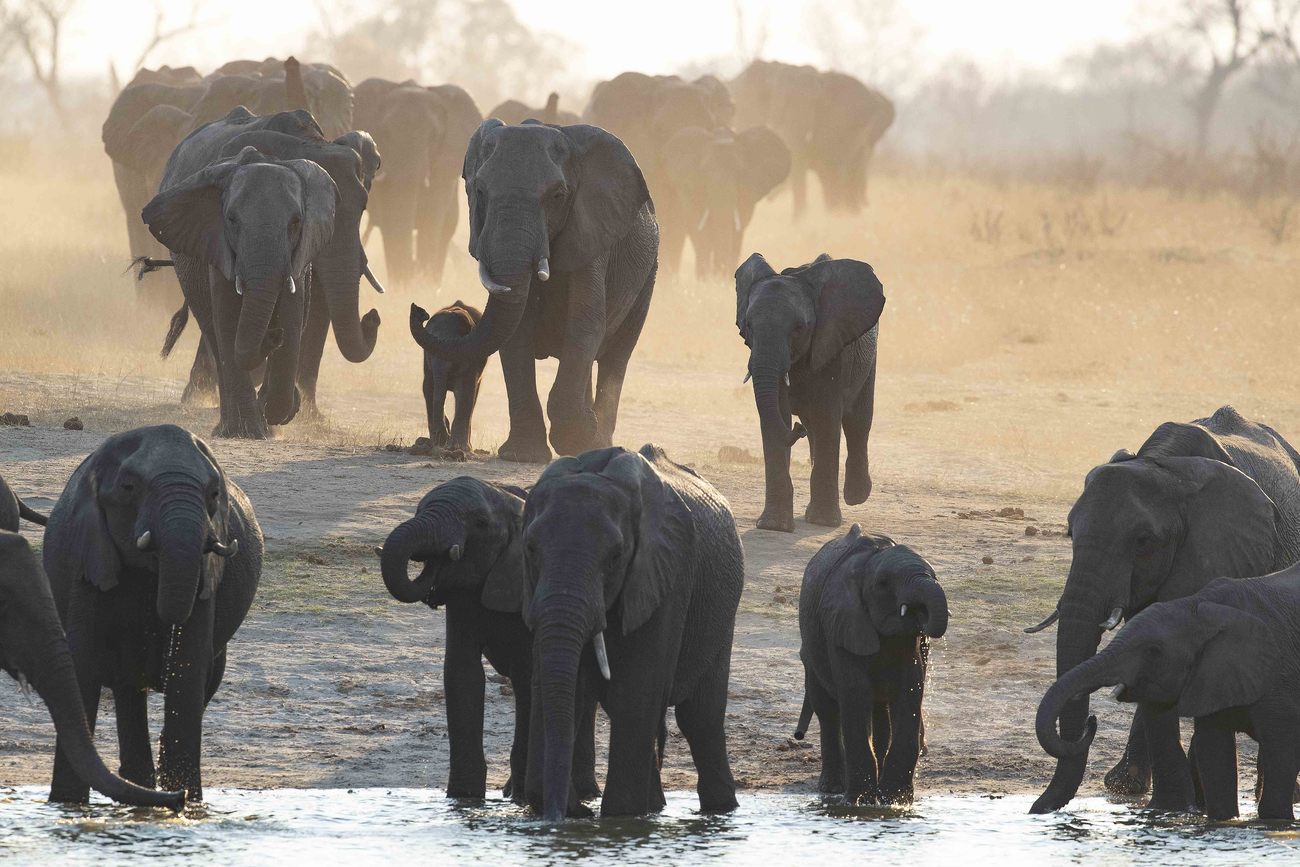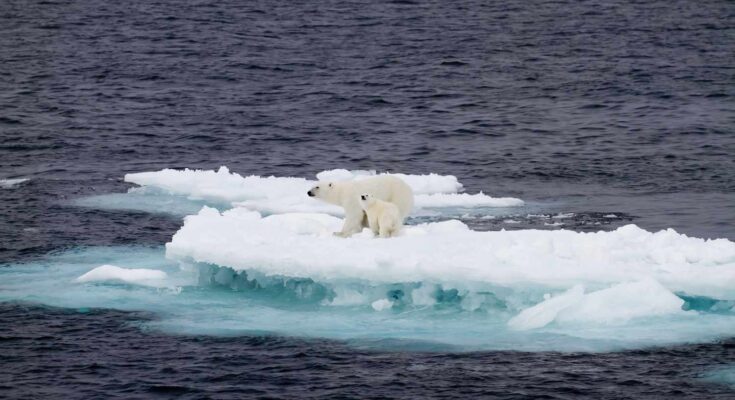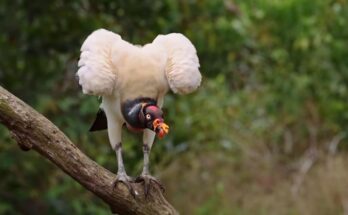Climate change impacts wildlife in multiple ways. Rising temperatures and changing weather patterns alter habitats.
This affects food sources and migration patterns. Wildlife struggles to adapt. The effects of climate change on wildlife are far-reaching. Many species face new challenges to survive. Habitats are shifting, shrinking, or even disappearing. Animals find it harder to find food, reproduce, and thrive.
Changes in temperature and weather disrupt natural behaviors. Some species may move to new areas, while others cannot adapt quickly enough. The delicate balance of ecosystems is at risk. Understanding how climate change affects wildlife is crucial. It helps us take action to protect our planet’s biodiversity. This blog will explore these impacts in detail. Let’s dive in and see how wildlife is coping with our changing world.

Impact On Habitats
Climate change is reshaping the world. Its effects are seen everywhere. One of the most visible impacts is on wildlife habitats. As the climate changes, habitats shrink, fragment, or disappear. This affects the animals that depend on these habitats for survival.
Shrinking Natural Habitats
Rising temperatures and changing weather patterns are shrinking natural habitats. Forests are burning more frequently. This leaves many species without a home. Melting ice caps reduce the habitats of polar bears and seals. Coastal wetlands and mangroves are disappearing due to rising sea levels. Animals that depend on these areas have to move or face extinction.
Disruption Of Ecosystems
Climate change disrupts ecosystems. An ecosystem is a community of plants and animals interacting with their environment. With the climate changing, these interactions are disturbed. Plants and animals might not sync up anymore. For example, flowers might bloom earlier than usual. This means pollinators like bees and butterflies miss their food source.
Another example is the migration of birds. Many birds migrate based on temperature and food availability. If these factors change, birds might arrive at their destination too early or too late. This disrupts the delicate balance of the ecosystem.
Migration Patterns
Climate change has a profound impact on wildlife, especially on their migration patterns. Animals rely on environmental cues to guide their migrations. Rising temperatures and changing weather patterns disrupt these cues. As a result, many species face altered migration routes and breeding challenges.
Altered Migration Routes
Climate change forces animals to change their migration routes. Birds, for instance, travel different paths than they used to. Warmer temperatures cause them to fly earlier or later in the year. This shift can lead them to unfamiliar areas. These new routes may not provide the necessary food and shelter.
Similarly, marine animals like whales and fish move to different waters. They follow the shifting temperatures of the oceans. This can lead to increased competition for resources. It can also place them in danger from unfamiliar predators.
Impact On Breeding Cycles
Changing migration patterns affect breeding cycles. Many species time their breeding to match their migration. If they arrive too early or too late, they miss optimal breeding conditions. This can lead to lower birth rates and weaker offspring.
For example, birds often breed in sync with the availability of food. If insects or plants peak at different times, chicks may starve. Similarly, marine species may struggle to find safe breeding grounds. Warmer waters disrupt their usual locations, affecting their young’s survival.
Food Sources
Climate change impacts many aspects of our environment. One crucial area is wildlife food sources. Shifts in climate alter the availability and quality of food. This affects animal survival and behavior.
Changes In Food Availability
Climate change affects the growth of plants. Warmer temperatures and unpredictable rainfall patterns lead to reduced plant growth. This means herbivores find less food. When plants are scarce, animals struggle to meet their nutritional needs.
Insects and other small creatures also face changes. Many rely on specific plants for food. As these plants dwindle, insect populations decline. This affects the animals that eat them. Birds, small mammals, and reptiles find their food sources disappearing.
Competition For Resources
As food becomes scarce, animals compete more for what is available. Different species may fight over the same food. This leads to increased stress and aggression. In some cases, stronger animals outcompete weaker ones. This can reduce biodiversity.
Competition for food also forces animals to move. They leave their natural habitats in search of food. This migration can be dangerous. Animals face new predators and harsh conditions. The journey itself can be fatal for many.

Species Extinction
Climate change is one of the greatest threats to wildlife. It causes species extinction at an alarming rate. Animals and plants struggle to adapt to rapid environmental changes. As a result, many species face the risk of disappearing forever.
Endangered Species
Many species are now listed as endangered due to climate change. Polar bears are losing their ice habitats. Coral reefs are dying due to warmer oceans. These are just a few examples. The list of endangered species is growing every day.
- Polar Bears
- Tigers
- Sea Turtles
- Coral Reefs
Loss Of Biodiversity
The loss of species leads to a loss of biodiversity. Biodiversity is essential for a healthy ecosystem. Different species play different roles in the environment. When one species disappears, it affects the entire ecosystem.
For example, bees are crucial for pollination. Without bees, many plants cannot reproduce. This impacts the food chain. The loss of one species can lead to the collapse of an entire ecosystem.
| Species | Role in Ecosystem |
|---|---|
| Bees | Pollination |
| Wolves | Predator Control |
| Coral Reefs | Marine Habitat |
Protecting biodiversity is crucial. It ensures the survival of ecosystems. It also supports human life. We depend on a healthy environment for food, water, and air.
Behavioral Changes
Climate change has a significant impact on the natural world. One major effect is on wildlife behavior. Animals are adapting to the changing environment. These adaptations are essential for their survival. This section explores some key behavioral changes in wildlife.
Altered Feeding Habits
As temperatures rise, food sources change. Many animals alter their feeding habits. They may shift their diet to new types of food. This change helps them survive when their usual food is scarce.
Example: Polar bears are a good example. They rely heavily on sea ice to hunt seals. As ice melts, they struggle to find food. Some bears now forage on land for berries and birds.
- Birds may migrate earlier due to warmer springs.
- Marine animals might move to cooler waters.
- Herbivores might shift to different types of plants.
Changes In Reproductive Behavior
Climate change also affects how animals reproduce. Many species now breed at different times. This shift can be a response to temperature changes. It ensures that their young have the best chance of survival.
Example: Some amphibians breed earlier in the season. Warmer temperatures trigger this early breeding. This change helps their offspring develop in suitable conditions.
- Birds may lay eggs earlier in the year.
- Fish might spawn in new locations.
- Mammals could have longer breeding seasons.
These changes in reproductive behavior are crucial. They help species adapt to a changing environment. But they also pose challenges. Mismatched timing can disrupt food availability for the young.
Marine Life
Climate change is having a profound impact on marine life. Rising temperatures, ocean acidification, and extreme weather events are changing the delicate balance of ocean ecosystems. These changes affect the survival, reproduction, and distribution of marine species.
Ocean Acidification
Ocean acidification occurs when the ocean absorbs excess carbon dioxide from the atmosphere. This process lowers the pH level of seawater, making it more acidic. Acidic waters harm marine organisms, especially those with calcium carbonate shells or skeletons.
For example, shellfish like oysters and clams struggle to build and maintain their shells. This weakness makes them more susceptible to predators and reduces their overall population. Similarly, coral reefs, which are vital habitats for many marine species, face significant threats.
Coral Bleaching
Coral bleaching happens when corals lose the algae that live in their tissues. These algae provide corals with food through photosynthesis. Without these algae, corals turn white and often die. Rising sea temperatures are the main cause of coral bleaching.
Bleached corals cannot support the diverse marine life that relies on them. This leads to the collapse of entire ecosystems. Fish, invertebrates, and other species lose their homes and food sources. The loss of coral reefs also affects human communities that depend on them for food, tourism, and coastal protection.
| Impact of Climate Change | Effect on Marine Life |
|---|---|
| Rising Sea Temperatures | Coral Bleaching |
| Ocean Acidification | Weakened Shells and Skeletons |
| Extreme Weather Events | Disrupted Habitats |
Understanding these impacts helps us take steps to protect marine life. Reducing carbon emissions and protecting marine habitats are crucial. By taking action, we can help ensure the survival of these vital ecosystems.
Adaptation Strategies
Climate change impacts wildlife in many ways. Animals and plants must adapt to survive. These adaptation strategies can be complex. Some species evolve, while others need human help.
Evolutionary Changes
Evolution is a natural process. Species change over generations. These changes help them survive in new conditions. For example, some animals develop thicker fur. This helps them in colder climates.
Birds might change their migration patterns. They travel to new areas where the climate is better. This ensures they find food and shelter.
Human Interventions
Humans play a big role in helping wildlife. Conservation efforts protect habitats. This gives animals a safe place to live. Wildlife corridors connect different habitats. Animals can move freely and find resources.
Rehabilitation centers help injured or endangered species. They provide care and release animals back into the wild. Some projects relocate species to safer areas. This helps them escape dangerous conditions.

Conservation Efforts
Climate change has a profound impact on wildlife. Many species face threats to their survival. Conservation efforts are crucial to mitigate these effects. By protecting natural habitats and enforcing policies, we can help preserve biodiversity.
Protected Areas
Protected areas offer a refuge for endangered species. These regions include national parks, wildlife reserves, and marine sanctuaries. They provide a safe space for animals to live and reproduce. Without these areas, many species would face extinction.
Protected areas also help maintain ecosystems. Forests, wetlands, and coral reefs need protection. These ecosystems support a diverse range of life forms. By conserving these areas, we ensure that wildlife has a place to thrive.
Efforts to establish more protected areas are ongoing. Governments and organizations work together to expand these regions. Community involvement plays a key role. Local support can lead to successful conservation initiatives.
International Policies
International policies are essential for wildlife conservation. Agreements and treaties set global standards. These policies address issues like habitat loss, poaching, and pollution. They create a framework for countries to collaborate on conservation efforts.
One key agreement is the Convention on Biological Diversity (CBD). This treaty aims to protect biodiversity worldwide. It encourages nations to create and enforce laws that support conservation. Another important policy is the CITES, which regulates the trade of endangered species. This helps prevent illegal trafficking of wildlife.
Global cooperation is vital. Climate change affects all parts of the world. International policies ensure that efforts are unified and effective. By working together, we can make a significant impact on wildlife conservation.
Frequently Asked Questions
How Does Climate Change Impact Animal Migration?
Climate change disrupts animal migration patterns by altering habitats and food sources. This forces species to migrate earlier or later.
What Are The Effects Of Climate Change On Marine Life?
Climate change leads to ocean warming and acidification. These changes harm coral reefs and disrupt marine ecosystems, affecting marine species.
How Does Climate Change Affect Bird Populations?
Climate change shifts habitats and food availability. This causes bird populations to decline and forces them to adapt or migrate.
Can Climate Change Cause Species Extinction?
Yes, climate change can lead to habitat loss and altered ecosystems. This increases the risk of extinction for many species.
Conclusion
Climate change poses serious threats to wildlife. Habitats are shrinking, and food sources vanish. Species face extinction at alarming rates. Adaptation becomes increasingly difficult. Human actions play a big role in this crisis. Protecting wildlife requires urgent, collective efforts. Every small step helps safeguard our planet’s biodiversity.
Let’s act now to preserve wildlife for future generations. We can make a difference together.



